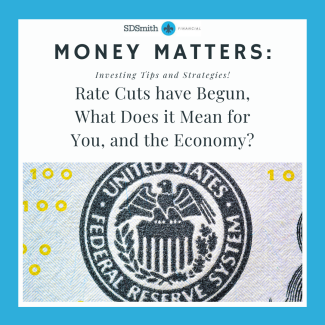
Rate Cuts Have Started. What Does It Mean For You and The Economy?
In September 2024, the Federal Reserve cut interest rates for the first time since March 2020. Back then, rate cuts were a swift response to the economic uncertainty of COVID-19. Since then, however, the Fed has raised rates at one of the fastest paces in history, with the last increase in July 2023 bringing rates to a peak of 5.25%. Looking forward, the Fed has hinted at more modest cuts: 0.25% reductions are anticipated in November and December 2024, with four additional 0.25% cuts expected in 2025. So, what does all this mean for you and the broader economy?
How Interest Rate Cuts Affect Borrowing and Spending
The Federal Reserve’s rate adjustments are based on the Federal Funds Rate, which is the rate banks pay to borrow money from the Fed. When this rate drops, it becomes less expensive for banks to borrow, which typically leads to lower borrowing costs for consumers and businesses alike. This could mean savings on mortgages, auto loans, and credit cards. But the benefits don’t stop with individuals—businesses also benefit from cheaper borrowing costs, allowing them to take on projects or issue bonds at lower rates.
This extra liquidity on both the consumer and business sides of the economy can promote growth, which is why many experts expect continued economic expansion in the near term, regardless of who’s in the White House. However, there’s a caveat: three out of the last four rate-cutting cycles led to recessions. So, is there cause for concern?
Are We Heading Toward a Recession?
While a recession is always a possibility, it’s worth noting that previous rate-cutting cycles were often a response to a recession that was already unfolding. For instance, the cuts in 2020 addressed the economic shocks from the COVID-19 pandemic. Before that, the 2007-2008 cuts responded to the housing crisis, and the 2001 rate cuts addressed the dot-com bubble burst and the 9/11 attacks.
Today, these rate reductions are more of a “return to normalcy,” with rates adjusting to support steady, long-term growth rather than emergency stimulus. Historically, “return to normalcy” rate cuts have often led to strong economic growth, a trend we may see continue.
Housing: The Market to Watch
Perhaps the sector most sensitive to these rate changes is housing. As rates decline, consumer purchasing power typically increases. Here’s an example: with a debt-to-income target of 24%, no monthly debts, and an annual salary of $100,000, a buyer might afford a $315,000 home at the current 6.5% interest rate. If the rate drops to 5%, that same buyer could afford a $372,000 home—an 18% increase in affordability.
If home prices rise by less than 18% over the next 14 months, buyers could benefit significantly from this increased affordability. This dynamic could lead to higher demand in the housing market, potentially lifting prices.
If you’re curious about how these rate cuts might impact your unique financial situation or would like to discuss strategies tailored to your goals, please don’t hesitate to reach out.

